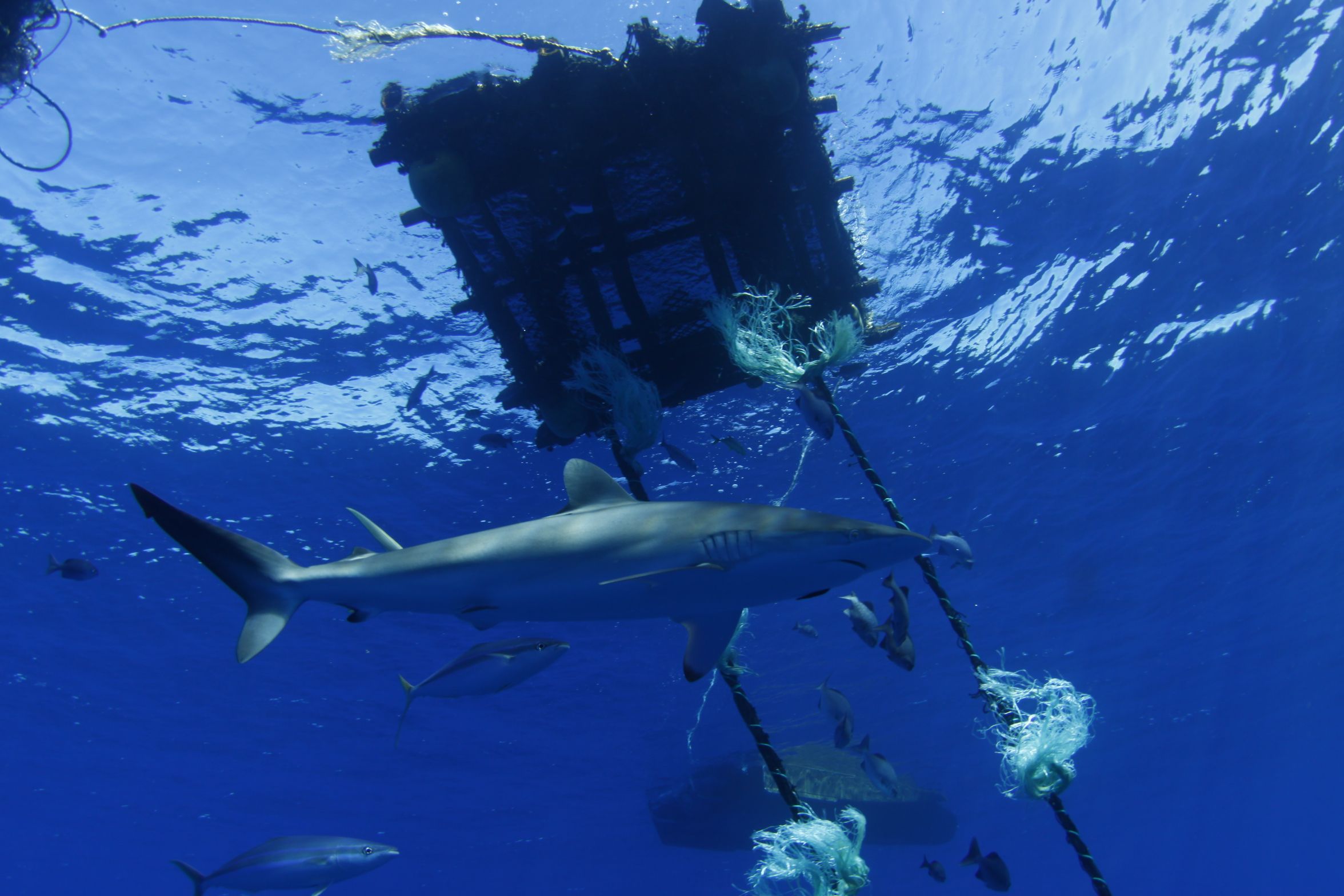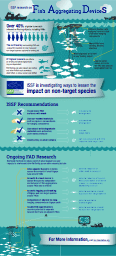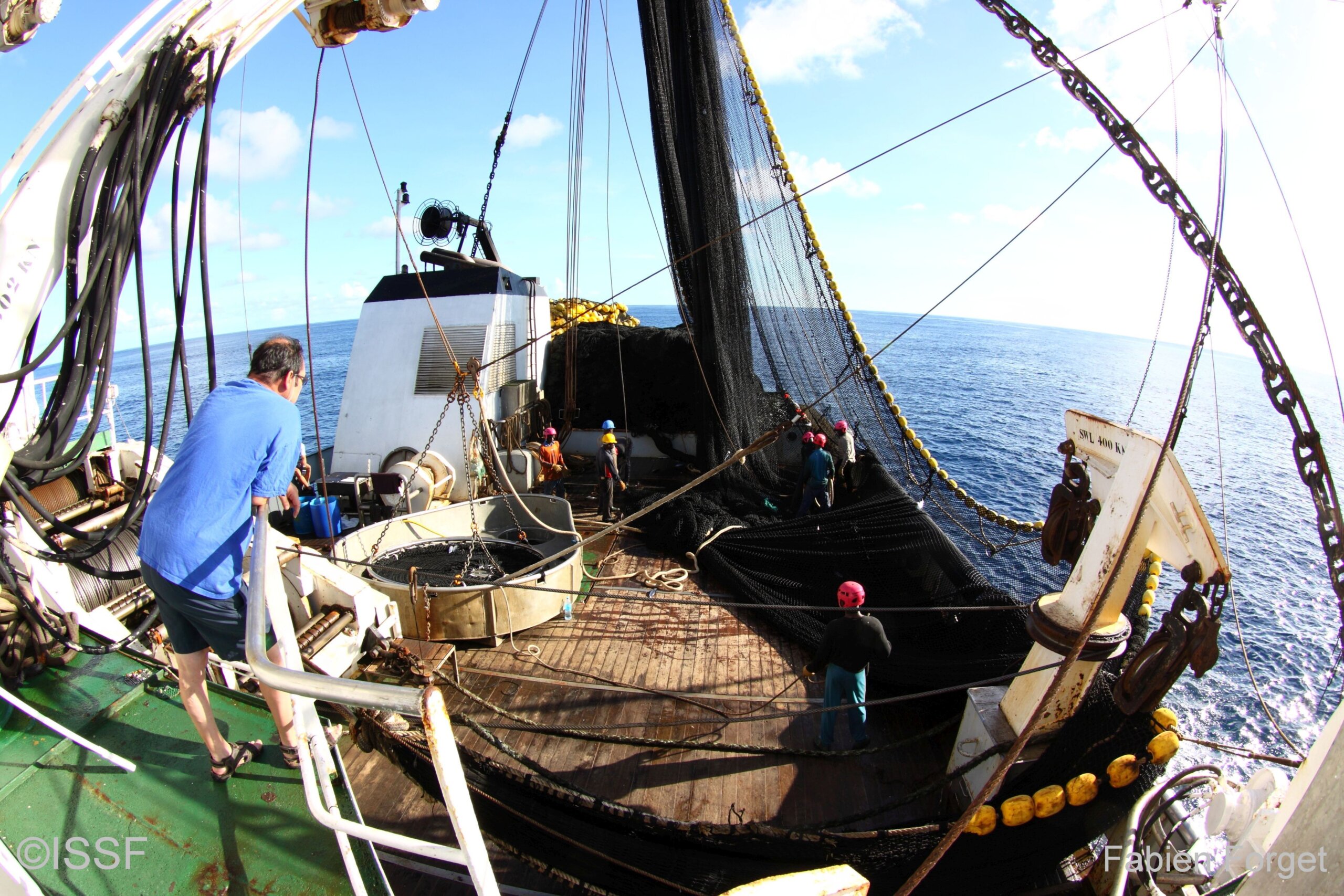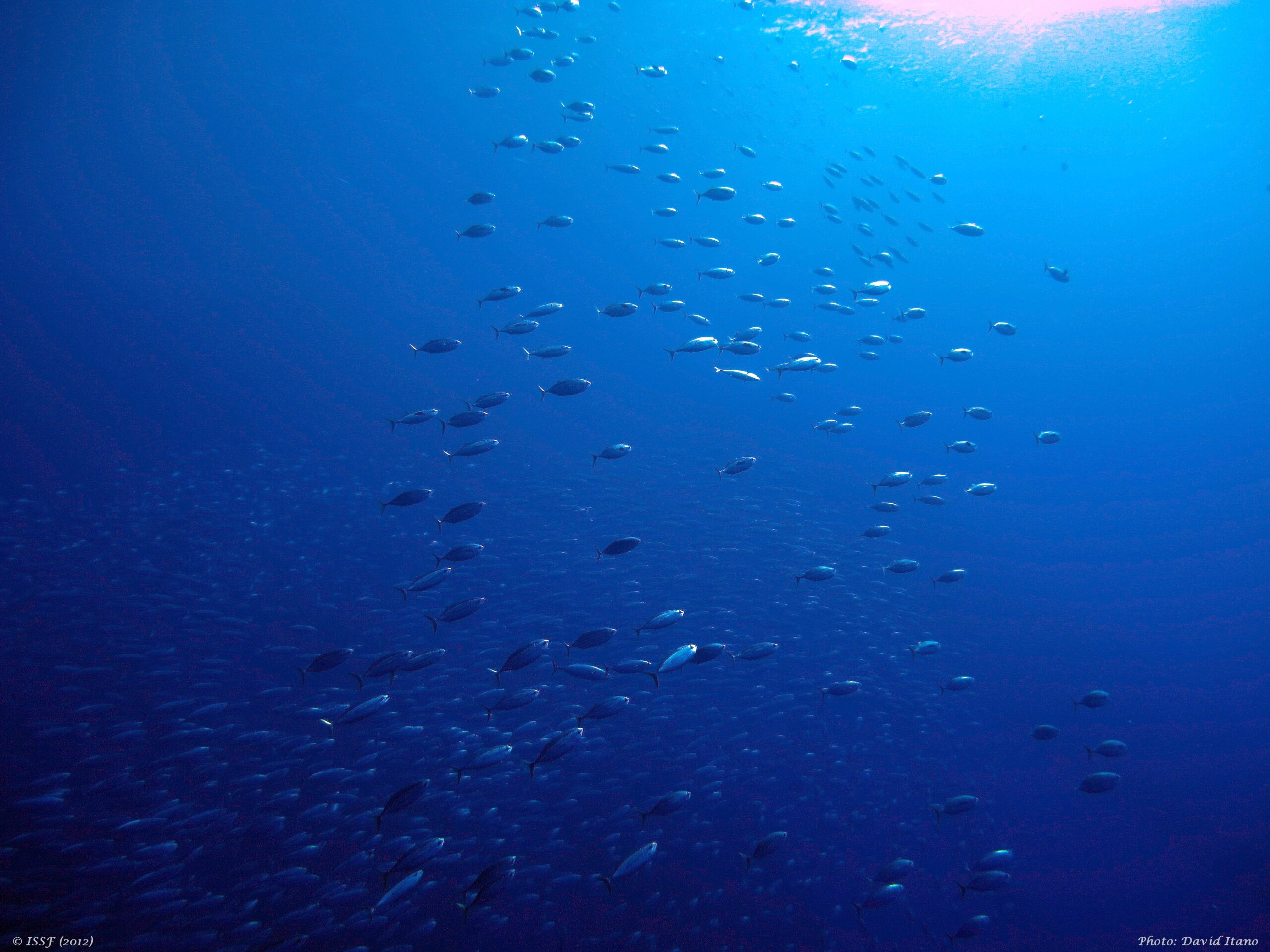
On FADs – No Gear or Method Is Perfect, and Comprehensive Management Is the Goal
Though fishing with fish aggregating devices (FADs) has been in practice for hundreds of years, the amount of FADs being used by purse seine vessels has increased steadily in the last two decades. Considering this dynamic, we must continue to find ways to relieve the pressure that this most efficient and widely used fishing method can sometimes place on tuna stocks and their ecosystems.
Just like any fishing method, the use of FADs comes with some downsides. Fortunately, there are solutions that can achieve better ecological outcomes. The oft-cited issue of bycatch and overfishing associated with FADs has been mostly rooted in the unknown – gaps in data, animal entanglement below the surface and the absence of clear regional management guidelines. Uncovering the reality behind these unknowns has been a priority for our organization and our partners, and fishers and fisheries managers are getting much, much better at it.
Every method of catching fish has its drawbacks – favoring one over the others won’t get us very far. We know that, on average, fishing on floating objects can lead to bycatch rates[i] of around 2 percent – a small percentage when compared to other fisheries. We also know that free school sets are not bycatch-free. FAD-free purse seine fishing accounts for a higher proportion of ray bycatch than FAD sets do, and in some regions they account for a similar proportion of sharks. Other fishing gears such as gillnets and longlines have a much higher bycatch rate, although it is poorly quantified due to low rates of observer coverage. If we are to truly alleviate pressure on stocks and their ecosystems, it shouldn’t be done based on favoring a single gear type or fishing method. Rather, it should be accomplished by initiating strategies for improved data collection and reporting, enhancing enforcement of existing management measures, working with skippers, reducing capacity and fishing effort, and via science-led efforts to reduce bycatch – for every gear type.
As of yet, there is no comprehensive system or database in place that tracks the number of FADs, FAD types or their location. However, RFMOs are beginning to recognize the value of this information for managing their stocks and even took some strides in this area recently. In 2013, ICCAT, IOTC and IATTC set a higher bar for the future management of FADs by adopting rules for the collection of detailed data on FAD usage and recommending the use of FAD designs that reduce the entanglement of marine animals, such as sharks and sea turtles. The second component of FAD management progressed even further in 2014 with both ICCAT and WCPFC creating special FAD management working groups. The working groups will assess the use of FADs in tropical tuna fisheries; developments in FAD technology; the collection of additional FAD data; FAD marking and identification; FAD monitoring, tracking, and control and will identify management options. In addition, the IOTC Science Committee recommended recently that the Commission also create a FAD working group, which they will consider in April of this year.
Catch quotas and limits on carrying capacity are going to get us further than avoiding specific gears all together. We’re attempting to cap the number of purse seine boats on the water by removing incentives for construction of new vessels. As a matter of fact, ISSF Participating Companies are not to transact with purse seine vessels built after December 31, 2012 unless they are to replace older vessels. The equation here is simple: the fewer boats, the less excessive pressure on the stocks. Working with people on the water so that they understand bycatch and the best ways to avoid it is also a priority. Since 2010, ISSF has been facilitating workshops around the world to deliver today’s best practices to tuna fishers. As the at-sea portion of the project identifies even better practices, the workshops are updated.

Considering that in some regions the catch of bigeye tuna by purse seiners contributes to its overfishing, it is also important to find ways to reduce the catch of this target species. Since 2011, the ISSF research teams have been studying technical methods to lower catches of small bigeye tuna, specifically for purse seine vessels fishing on FADs including:
- Research on methods that can help fishers assess the amount of small bigeye tuna around a FAD – prior to setting – through the use of echo-sounder buoys and acoustic or visual equipment.
- Investigation of the net effect of different depths of materials suspended beneath FADs on the amount of small bigeye tuna aggregated.
- Research to assess the potential of competing stimuli to segregate tuna species, i.e. aiming to separate bigeye from the FAD that the vessel will set on.
Although there is still work to do to improve the use of FADs in fisheries to make sure that there’s plenty of fish in the sea, we’ve made substantial progress in recent years. ISSF, along with other likeminded organizations, will continue to work on realistic, science-based solutions to make sure we continue to make progress on reducing bycatch and alleviating the strains on fish stocks.
[i] This is the catch rate of species other than skipjack, bigeye and yellowfin tunas


